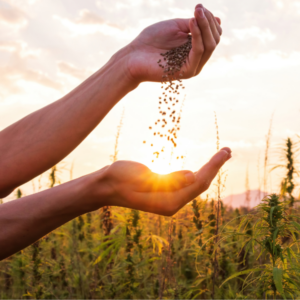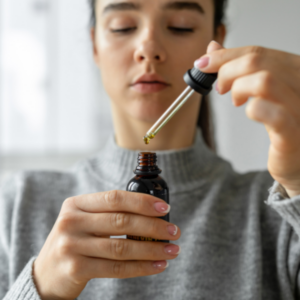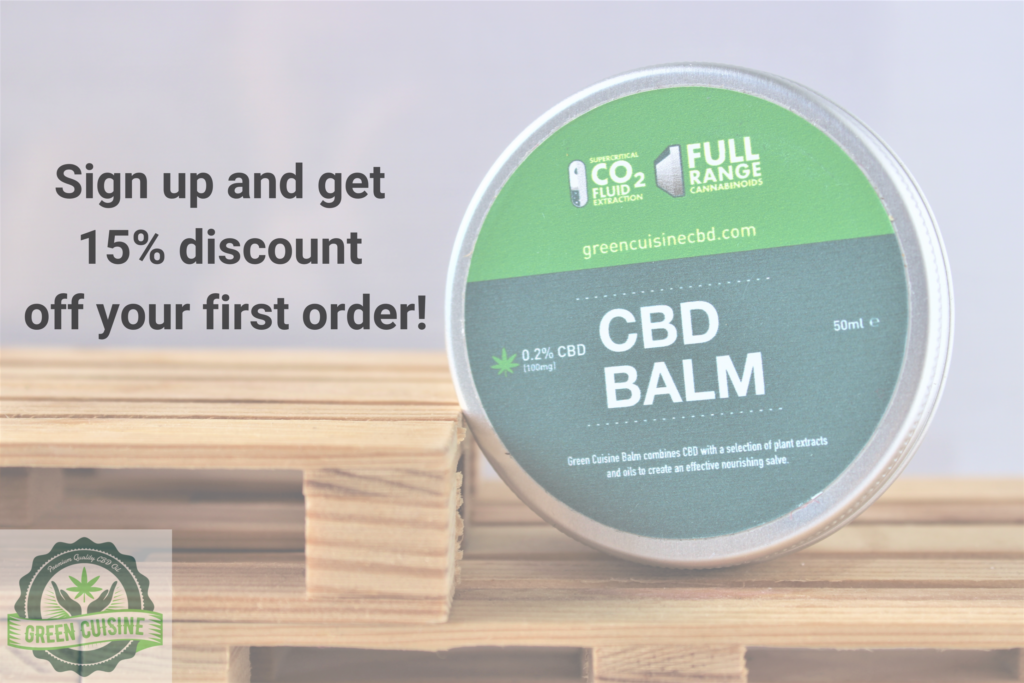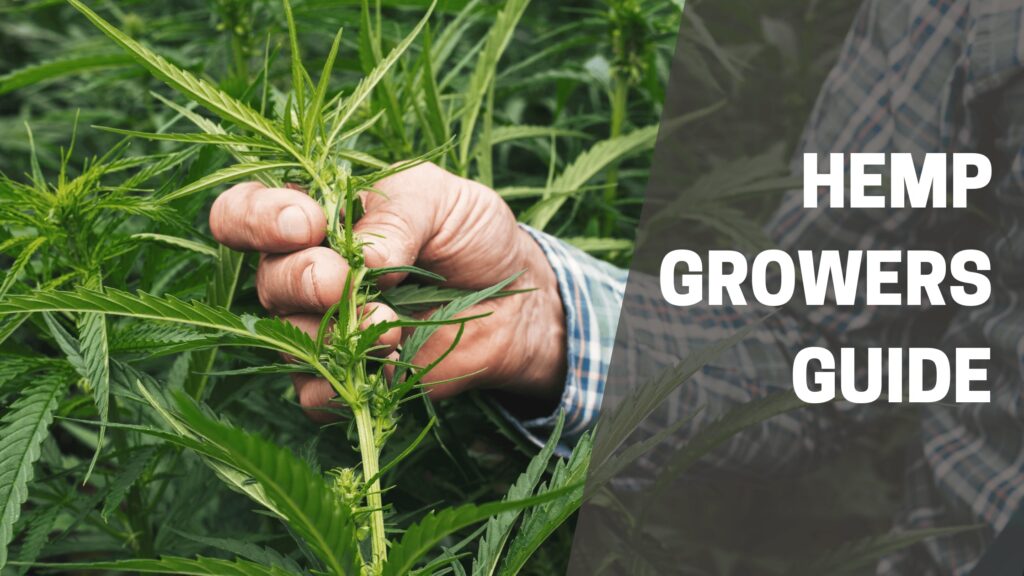
Discovering how to grow hemp at home is like learning how to drive. Others do it, and you’re pretty sure you can handle it, but it’s still intimidating. What if something goes wrong?
Fortunately, unlike driving, you can simply start over if you mess up growing hemp at home. It’s a learning experience. But where to start?
This article is for the beginner looking at how to grow hemp at home. We’ll outline the basics so you’ll have a base to launch further inquiries.
So, are you confused about the difference between hemp and cannabis? Not sure what a “clone” is? Does the word “hydroponic” make you want to run and hide?
Well, no fear. Green Cuisine CBD is here!
Hemp vs Cannabis
Technically, hemp and cannabis are the same plant genus. So asking how to grow hemp at home is the same as asking how to grow cannabis at home.
The difference stems from legal definitions. Because cannabis contains THC, which can get you high, regulators have long declared cannabis plants with 0.3% THC and less to be “hemp.”
For these reasons, growing hemp is legal in most places. Check your country’s legal status first, but most places let you grow hemp for personal use.
Of course, hemp doesn’t contain enough THC for a psychoactive effect. But perhaps you’re more interested in the other cannabinoids available, like CBD, CBN or CBG.
How to grow hemp at home: Clones or From Seed?
Most people think you start with hemp seeds and go from there. But it’s possible to grow from a “clone” of another plant.
Seeds are often more accessible to consumers than clones of an existing plant. They’re also easier to transport in the mail. Even in places where cannabis is illegal, ungerminated cannabis seeds usually fall into a loophole where it’s legal to buy and sell.
Starting from seeds allows the growers to breed their own strains and begin with fresh genetics. But if you’re not ready for that, you can buy feminized seeds guaranteed to produce nice, sticky cannabis buds.
Of course, seeds don’t always germinate. And it can be difficult for beginners to correctly dial in their plants’ temperature, humidity, and nutrients. Seeds also take longer to grow.
For this reason, a beginner may wish to grow from a clone.
A clone is a cutting taken from vegetating mother plants. As the name suggests, a clone is an exact copy of the mother plant.
Growing from clones is undoubtedly faster than growing from seed. All you need to do is root your clone in the dirt, and you’re good to go.
Clones have less uncertainty, so long as you know about the mother. But there are some disadvantages as well.
For starters, clones are incredibly hard to find compared to seeds. They’re also more delicate and can die before placing down their roots.
A clone inherits all the good traits of the mother plant… but also all the bad features.
It comes down to preference, but if you’re new to this and not sure how to grow hemp at home, we suggest starting with seeds.
Just plant more than one! Some seeds are duds, and others simply don’t take.
How to grow hemp at home: Indoor or Outdoor?
When growing hemp at home, should you choose indoor or outdoor? Both have their pros and cons.
If this is your first time, you may benefit from a small indoor grow tent. You can find some DIY instructions online or purchase a ready-made one.
Gorilla Grow Tents are popular and are suitable for whether you decide to use soil or hydroponics (more on that below).
But we don’t recommend any single brand over another. Do some research and see what fits your lifestyle. Someone in a small bachelor’s apartment will have different needs than someone in a house with more space.
Growing inside a grow tent gives you more control over the temperature, humidity, food, and water. It drastically reduces the potential for a bug infestation.
Modern grow lights don’t suck up energy like they used to, but, that said, you can’t compete with free power from the sun.
Outdoor growing requires less maintenance and can yield larger buds when harvesting. But, you also lose control that you have with indoor setups.
Also, depending on where you are, your growing season may be too short to make a single outdoor crop worthwhile.
If growing hemp at home is all new to you, you might want to stick to indoor. It’ll be easier to control and identify any problems that may arise during the process.
With outdoor, you lose control of too many variables. And growing can be a headache without worrying about outdoor elements you can’t control.
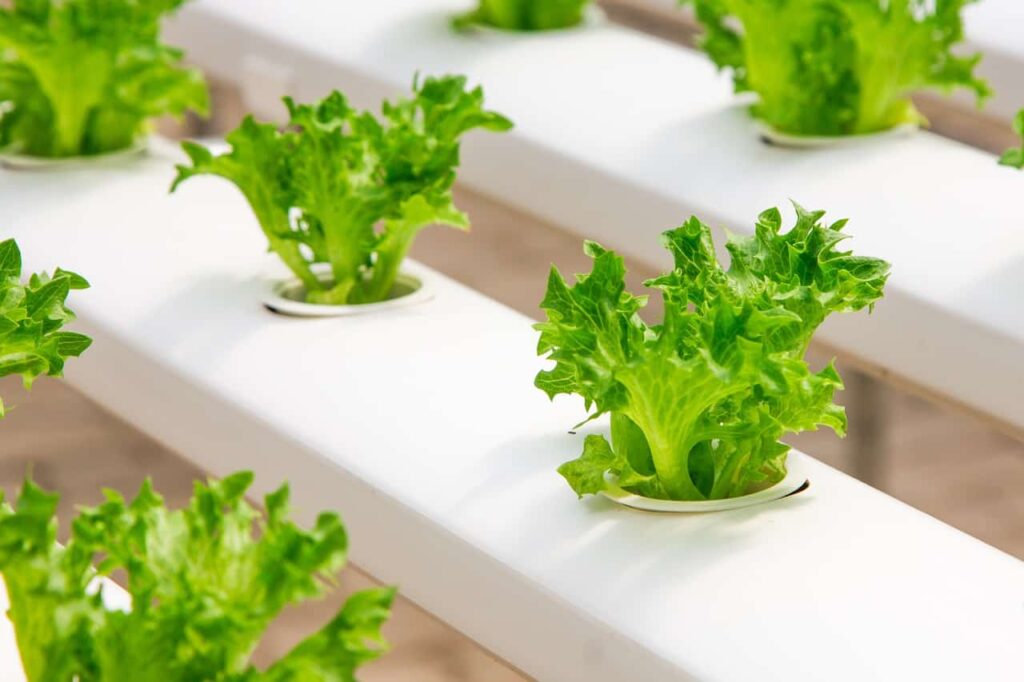
How to grow hemp at home: Soil vs Hydroponics
When it comes to how to grow hemp at home, you must decide first and foremost whether you’re using soil or a hydroponics system.
And don’t let the term “hydroponics” intimidate you. It simply means growing your plants in water instead of dirt.
A lot of growers prefer hydroponics for several reasons. For starters, it requires less space than soil. A plant in soil needs room to spread out its roots. You submerge the roots into a nutrient water solvent in a hydroponic system.
You have more control of your plant’s food with hydroponics. Whereas soil acts as a nutrient carrier, it is the water doing this job in hydroponics. Hydroponics allows you to calibrate your plants’ food (as well as allow you to grow them close together to save on space).
A lot of pests and diseases find their starting point in soil. While hydroponic plants aren’t immune to diseases, they are typically affected less than soil-based plants.
And despite basing the system around water, most growers agree that a hydroponic system uses less water over time.
Suppose you’re growing inside due to wanting to control variables. In that case, we suggest you take it one step further and use an indoor hydroponic system.
It may sound intimidating initially, and having plants grown in soil may sound more intuitive. But if you do some research, we think you’ll come to the same conclusions.
Hydroponic growing gives you far more control over your plant’s nutrients, temperature, humidity, and growing schedule.
Your Shopping List
So now that you have some understanding about how to grow hemp at home, here’s a list of items you may want to research for purchase.
- A grow tent or grow box (some of these come with lights and other items you’ll need, some of them are just the tents)
- LED grow lights
- Hemp seeds or clones
- Monitors (like humidity gauges, pH testers, thermometers)
- Pots
- Soil or a hydroponic setup
- Fans (to control humidity and airflow)
- Plant food (nutrients)
We’ve only covered the basics on how to grow hemp at home, so be sure to dig deeper into the topic if this is something that interests you.
But, in the meantime, if you need some CBD relief and can’t wait an entire growing season, we have some excellent products in our store. From balms to drops to hash, herbs, vapes, and beverages.
We even have CBD for your furry companions. All are organic, sourced from quality hemp flowers, and extracted using a safe and reliable CO2 extraction.
Don’t hesitate to ask us for any help or additional info!



